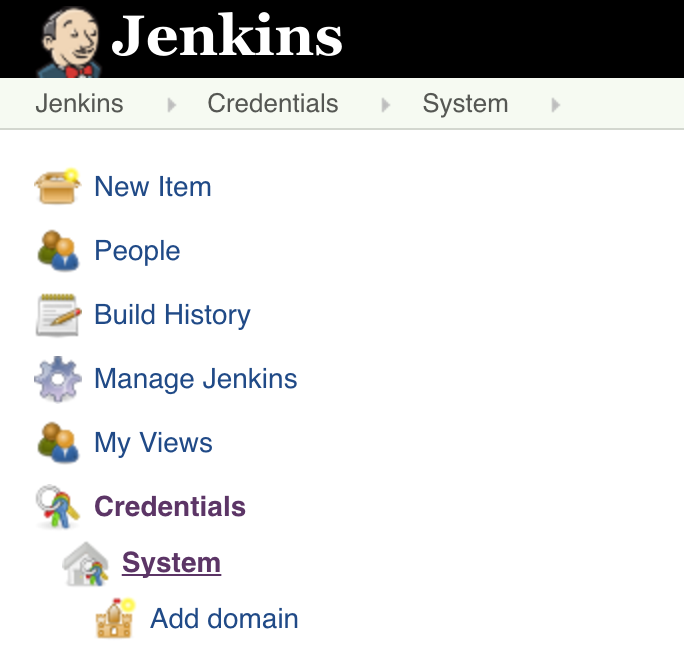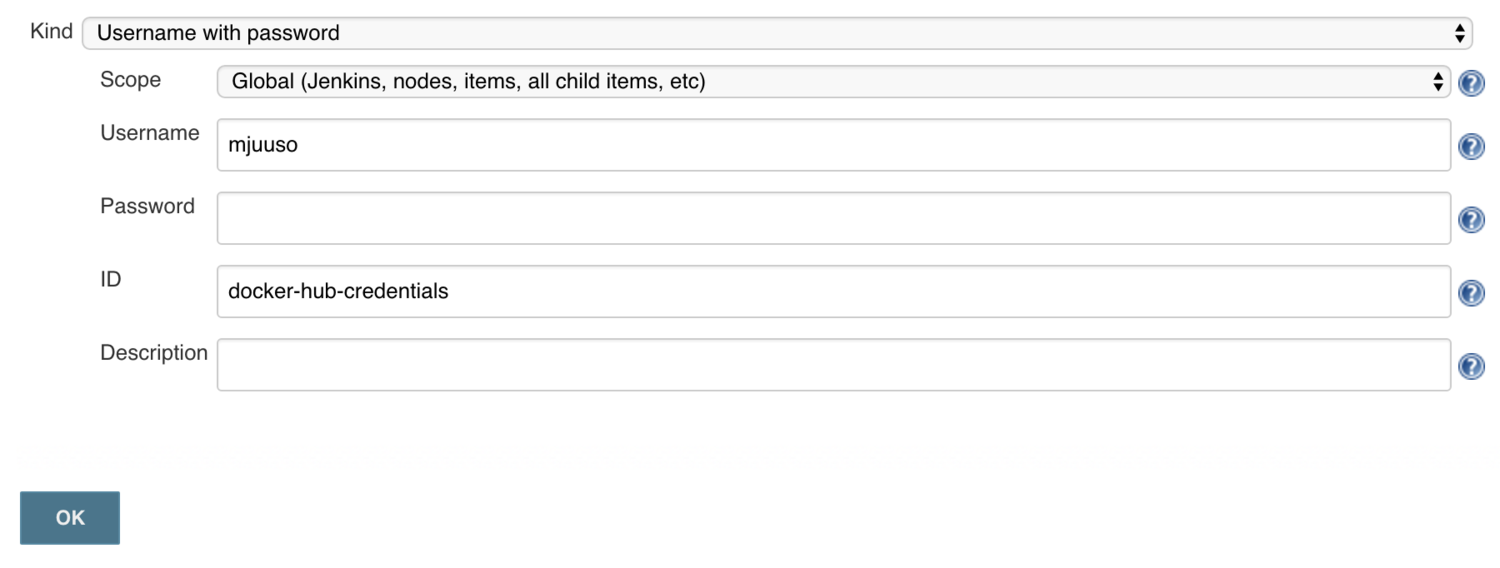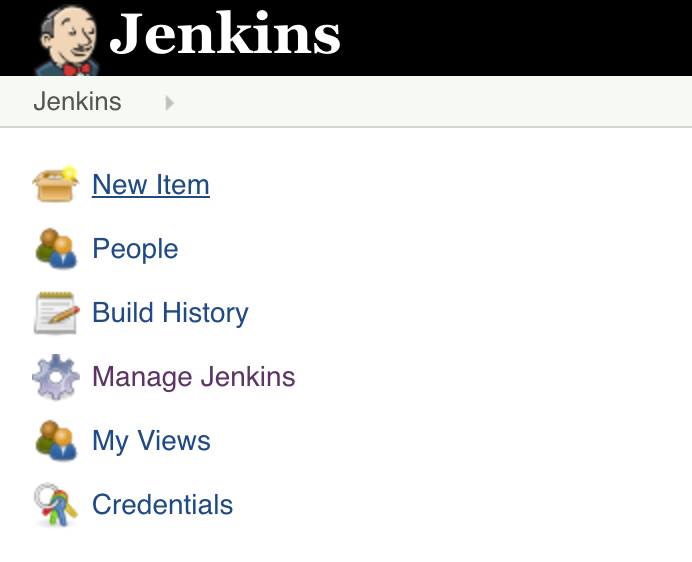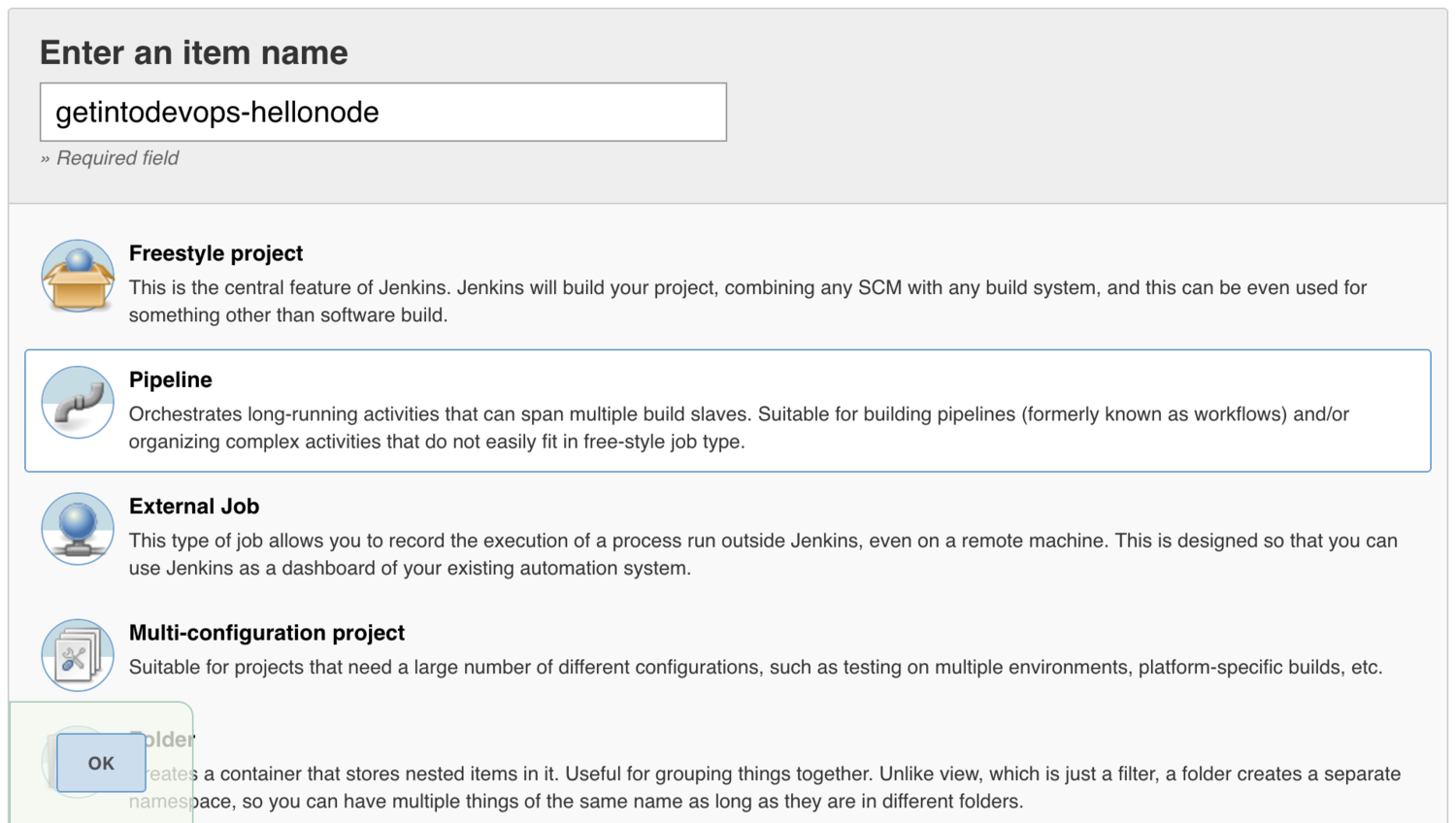Using Jenkins 2

Containerising your application is like shoving your app and all its dependencies into a box. Except the box is infinitely replicable. Whatever happens in the box, stays in the box - unless you explicitly take something out or put something in. And when it breaks, you’ll just throw it away and get a new one.
Containers make your app easy to run on different computers - ideally, the same image should be used to run containers in every environment stage from development to production.
This project is your guide for building a Docker image, and then setting up Jenkins 2 to build and publish the image automatically, whenever you commit changes to your code repository.
Requirements
To run through this guide, you will need the following:
1. To build and run the Docker image locally: Mac OS X or Linux, and Docker installed.
2. To set up Jenkins to build the image automatically: Access to a Jenkins 2.x installation.
Our application
For this guide, we’ll be using a very basic example: a Hello World server written with Node. We’ll also need a package.json, which tells Node some basic things about our application. To be able to build a Docker image with our app, we’ll need a Dockerfile. You can think of it as a blueprint for Docker: it tells Docker what the contents and parameters of our image should be.
Docker images are often based on other images. For this exercise, we are basing our image on the official Node Docker image. This makes our job easy, and our Dockerfile very short. The grunt work of installing Node and its dependencies in the image is already done in our base image; we’ll just need to include our application.
The Dockerfile is best stored with the code - this way any changes to it are versioned along with the actual application code.
Follow the instructions given below
1. Copy all files in your project folder.
2. Run npm install to install any dependencies for app (if we had any).
3. Specify npm start as the command Docker runs when the container starts.
Building the image locally
To build the image on your own computer, navigate to the project directory (the one with your application code and the Dockerfile), and run docker build:
docker build . -t getintodevops-hellonode:1
This instructs Docker to build the Dockerfile in the current directory with the tag getintodevops-hellonode:1. You will see Docker execute all the actions we specified in the Dockerfile
Running the image locally
If the above build command ran without errors, congratulations: your first Docker image is ready!
Let’s make sure the image works as expected by running it:
docker run -it -p 8000:8000 getintodevops-hellonode:1
The above command tells Docker to run the image interactively with a pseudo-tty, and map the port 8000 in the container to port 8000 in your machine.
You should now be able to check if the server responds in your local port 8000:
curl http://127.0.0.1:8000
Assuming it does, you can quit the docker run command with CTRL + C.
Building the image in Jenkins
Now that we know our Docker image can be built, we’ll want to do it automatically every time there is a change to the application code.
For this, we’ll use Jenkins. Jenkins is an automation server often used to build and deploy applications.
Note: this guide assumes you are running Jenkins 2.0 or newer, with the Docker Pipeline plugin and Docker installed.
If you don’t have access to a Jenkins installation, refer to https://wiki.jenkins-ci.org/display/JENKINS/Installing+Jenkins.
Pipelines as code: The Jenkinsfile
Just like Dockerfiles, I’m a firm believer in storing Jenkins pipeline configuration as code in a Jenkinsfile along with the application code.
It generally makes sense to have everything in the same repository; the application code, what the build artifact should look like (Dockerfile), and how said artifact is created automatically (Jenkinsfile).
Let’s think about our pipeline for a second. We can identify four stages:

Simple pipeline
We’ll need to tell Jenkins what our stages are, and what to do in each one of them. For this we’ll write a Jenkins Pipeline specification in a Jenkinsfile.
Configuring Docker Hub with Jenkins
To store the Docker image resulting from our build, we’ll be using Docker Hub. You can sign up for a free account at https://hub.docker.com.
We’ll need to give Jenkins access to push the image to Docker Hub. For this, we’ll create Credentials in Jenkins, and refer to them in the Jenkinsfile.
As you might have noticed in the above Jenkinsfile, we’re using docker.withRegistry to wrap the app.push commands - this instructs Jenkins to log in to a specified registry with the specified credential id (docker-hub-credentials).
On the Jenkins front page, click on Credentials -> System -> Global credentials -> Add Credentials.

Add your Docker Hub credentials as the type Username with password, with the ID docker-hub-credentials

Creating a job in Jenkins
The final thing we need to tell Jenkins is how to find our repository. We’ll create a Pipeline job, and point Jenkins to use a Jenkinsfile in our repository.
Here are the steps:
Click on New Item on the Jenkins front page.

Type a name for your project, and select Pipeline as the project type.

Select Poll SCM and enter a polling schedule. The example here, H/5 * * * * will poll the Git repository every five minutes.
Feedback
Was this page helpful?
Glad to hear it! Please tell us how we can improve.
Sorry to hear that. Please tell us how we can improve.